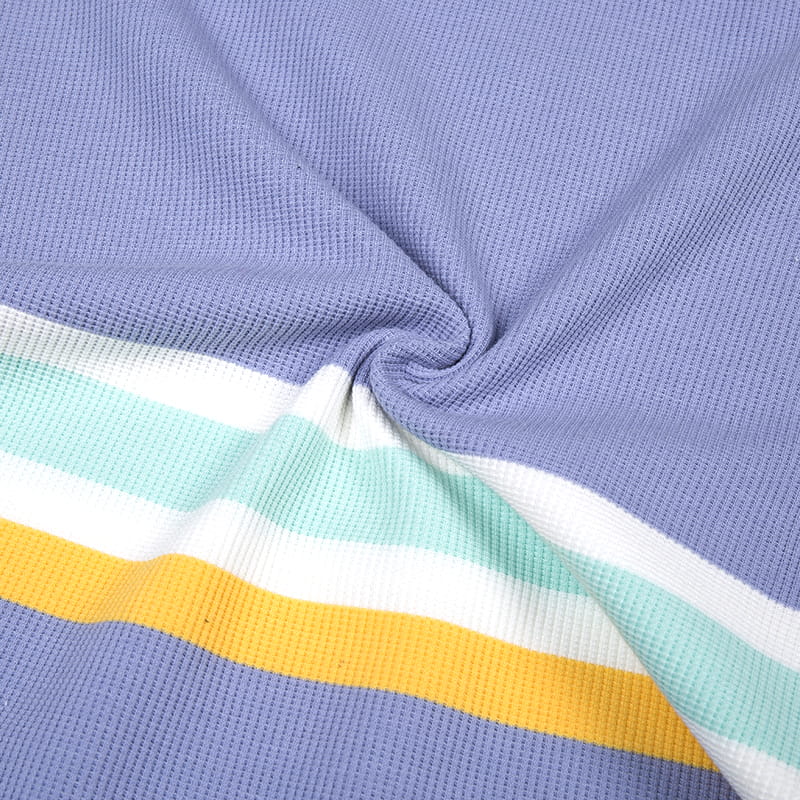
Knitted Garment Fabric and woven fabric are two distinct types of textile structures, each with its unique characteristics and manufacturing processes. Here are the key differences between knitted fabric and woven fabric:
1. Structure:
- Knitted fabric: Knitted fabrics are created by interlocking loops of yarn with needles or knitting machines. The loops form a series of connected rows, creating a stretchy and flexible fabric. Knitted fabric has a more fluid and continuous structure.
- Woven fabric: Woven fabrics are made by interlacing two sets of yarns, the warp (lengthwise) and the weft (crosswise), at right angles to each other. This interlacing creates a stable and non-stretchy fabric with clear grain lines.
2. Stretch and Drape:
- Knitted fabric: Knitted fabrics are inherently stretchy because of their interconnected loops. They can stretch in all directions, providing greater ease of movement and comfort. The stretchiness also contributes to the fabric's drape and ability to conform to the body.
- Woven fabric: Woven fabrics have limited stretchability, if any, and their drape is usually less fluid compared to knitted fabrics. They tend to hold their shape better and have a more stable structure.
3. Texture:
- Knitted fabric: Knitted fabrics can have various textures depending on the type of knitting stitches used, ranging from smooth and plain to intricate and patterned. Common knit textures include jersey, rib, cable, and lace.
- Woven fabric: Woven fabrics typically have a grid-like texture due to the over-and-under interlacing of warp and weft yarns. Woven fabrics can also be plain or have intricate patterns, but the texture is generally flatter and less textured compared to knits.


4. Production Process:
- Knitted fabric: Knitting is a continuous process where loops of yarn are formed and connected row by row. It can be done by hand or using knitting machines.
- Woven fabric: Weaving is an interlacing process where the warp and weft yarns are interlaced using a loom, creating a stable fabric with grain lines. Weaving involves a more stop-and-start process.
5. Seamlessness:
- Knitted fabric: Knitted garments can often be made without seams, as the fabric itself is stretchy and can be shaped to fit the body comfortably.
- Woven fabric: Woven garments usually require seams for shaping, as the fabric is less flexible and requires more pieces to create a fitted garment.


 English
English 中文简体
中文简体











